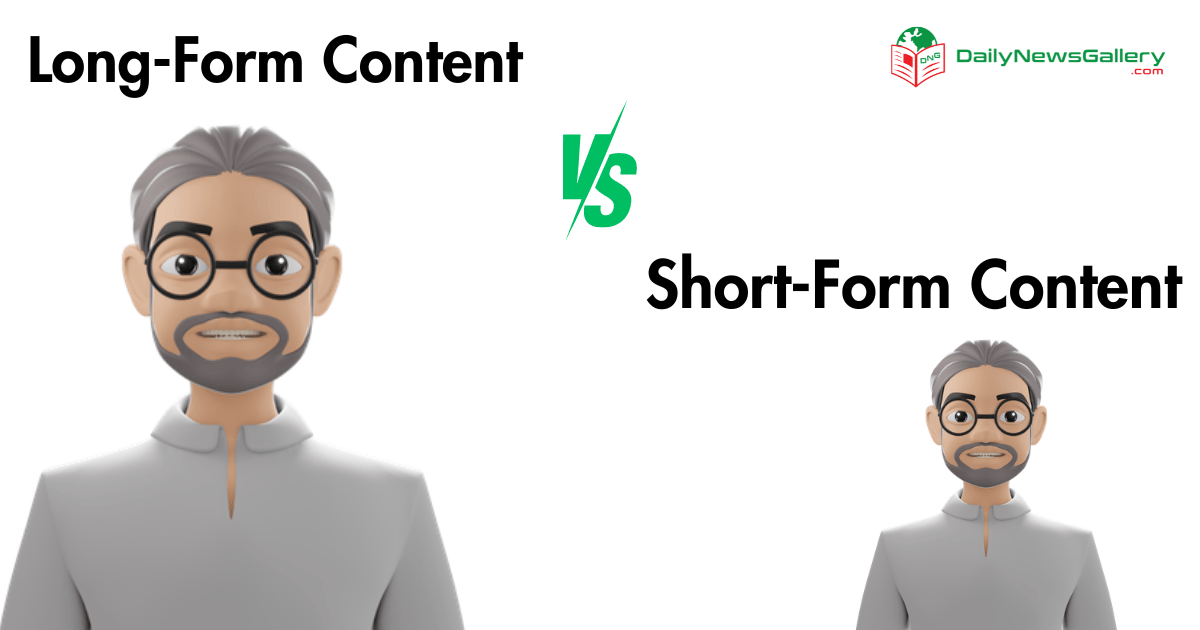
In the dynamic world of online publishing, there’s a perpetual discussion: long-form versus short-form content. SEO aficionados and content creators constantly weigh the pros and cons of each.
While both have their strengths, the real question is, which format excels in captivating audiences, optimizing for search engines, and delivering impactful messages? Join us as we explore this topic, learning from firsthand experiences and insights from the industry.
Long-Form vs. Short-Form Content
Now I’m going to share an in-depth analysis of this topic, so make sure to stick with me till the last and you will find the final answer at the last.
Experiment
To truly understand the impact of content length, I embarked on a little experiment. I crafted a comprehensive article on a specific topic, ensuring it surpassed 3,000 words.
This piece was designed to be exhaustive, covering every facet of the subject. Parallelly, I used AI tools to generate a concise version of the same topic, ensuring it was crisp yet informative.
This short-form content was then hosted on a separate website. The objective? To gauge which format resonated more with the audience and search engines.
Outcome
After a period of observation, the results were clear. The long-form content consistently outperformed its shorter counterpart. But this wasn’t just a testament to the word count. The depth, comprehensive nature, and value provided by the long-form article were the real heroes.
Caveats
While the experiment leaned in favor of long-form content, it’s essential to understand that length alone isn’t the magic potion. Padding an article with irrelevant information or fluff can be counterproductive.
The goal should always be to provide value. If a topic can be thoroughly covered in 600 words, then that should be the length of the article.
However, if a subject demands 3,000 words to do it justice, then it’s worth investing the time and effort into crafting such a comprehensive piece.
Takeaway
Content creation isn’t a one-size-fits-all approach. The decision between long-form and short-form should be dictated by the topic at hand and the value you aim to provide to your readers.
While long-form content might often have the edge in terms of SEO and depth, short-form content can be just as effective when executed correctly.
In the end, it’s about understanding your audience, recognizing the demands of the topic, and ensuring that every word you write adds value.
FAQ
- What is long-form content?
- Long-form content typically refers to comprehensive articles or posts that delve deeply into a specific topic, often exceeding 1,200 words.
- How is short-form content defined?
- Short-form content is concise and to the point, usually ranging from 300 to 1,000 words. It provides quick insights or overviews on a subject.
- Why is long-form content considered beneficial for SEO?
- Long-form content often covers a topic in-depth, leading to increased time spent on a page, better user engagement, and more backlinks, all of which can boost SEO rankings.
- Can short-form content rank well on search engines?
- Yes, if the content is of high quality, fulfills user intent, and is optimized for SEO, short-form content can rank well.
- Is long-form content always better than short-form?
- Not necessarily. The effectiveness of content depends on the topic, audience, and platform. Some subjects may be better suited for concise explanations, while others require in-depth exploration.
- How do I decide between long-form and short-form for my content strategy?
- Consider your audience’s preferences, the platform you’re publishing on, and the nature of the topic. Also, assess the primary goal of the content, whether it’s to provide a quick answer or a comprehensive guide.
- Does long-form content get more shares and engagement?
- While long-form content often sees higher engagement and shares due to its depth, it’s not a strict rule. Quality, relevance, and promotion play significant roles in content engagement.
- Is long-form content more time-consuming to produce?
- Generally, yes. Crafting in-depth articles requires more research, writing, and editing. However, the investment can lead to higher returns in terms of traffic and authority.
- Can I use a mix of both long-form and short-form content?
- Absolutely! A balanced content strategy often includes a mix of both types to cater to different audience needs and topics.
- How do I ensure my long-form content isn’t overwhelming for readers?
- Use subheadings, bullet points, images, and infographics to break the content. Ensure a logical flow and make it scannable for readers who prefer to skim.
Final Answer: Whether it’s a succinct 500-word article or an in-depth 5,000-word guide, quality should always be at the forefront of your content strategy.
The digital content landscape is vast and varied. While trends come and go, the constant remains the same: value.
Whether you’re leaning towards long-form articles or concise posts, ensure that your content is well-researched, relevant, and resonates with your audience.
After all, in the world of content, it’s not just about quantity but the quality that truly makes a difference.






